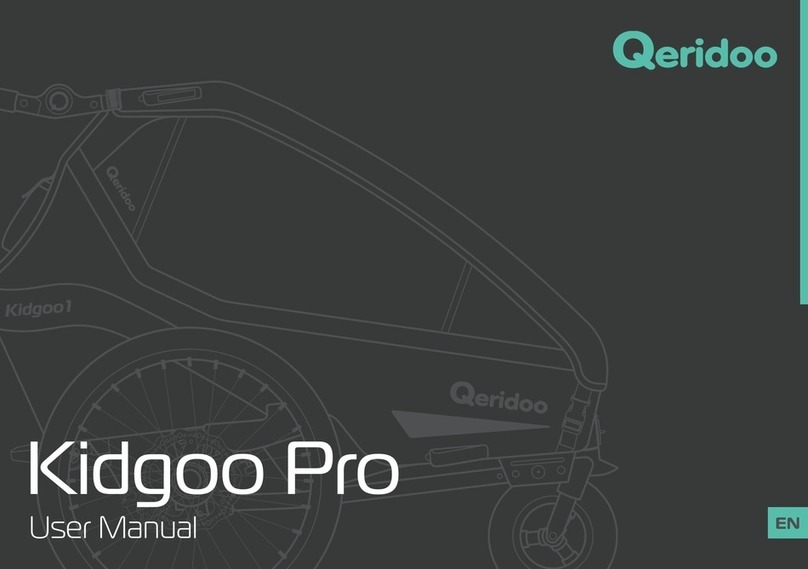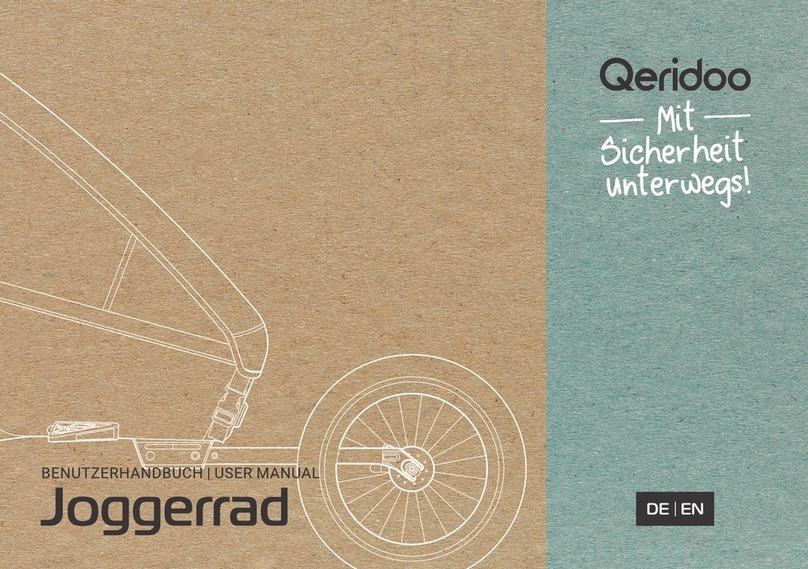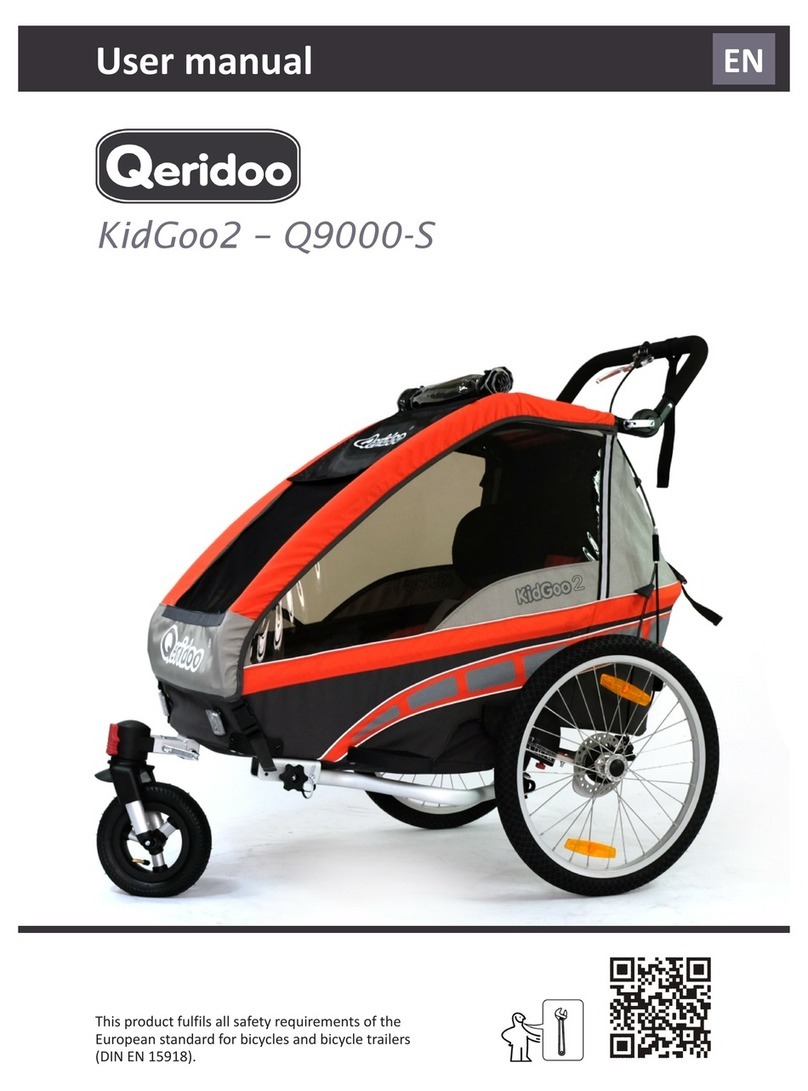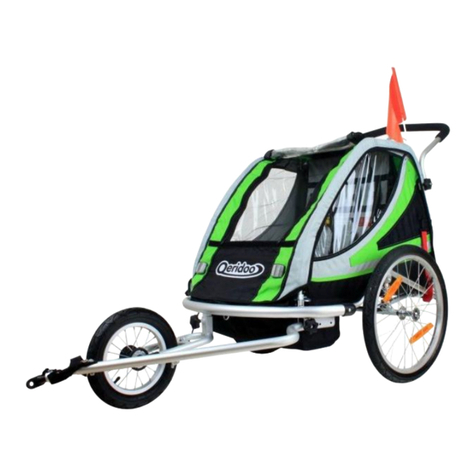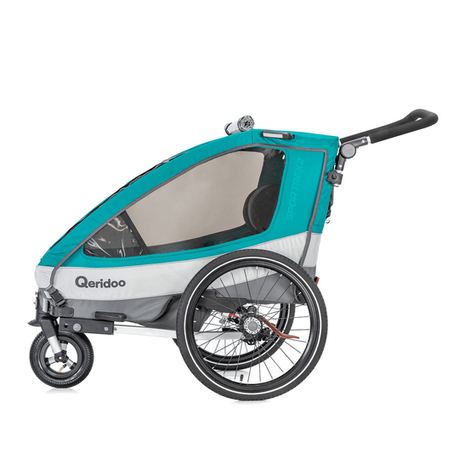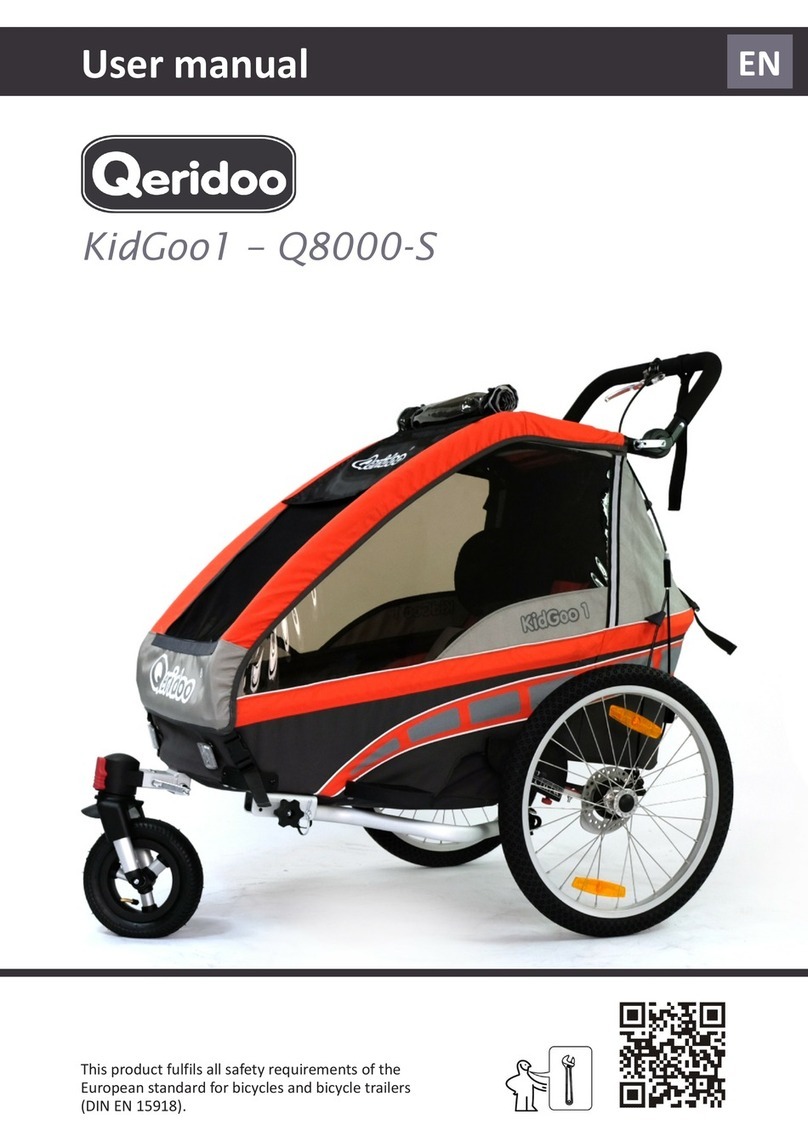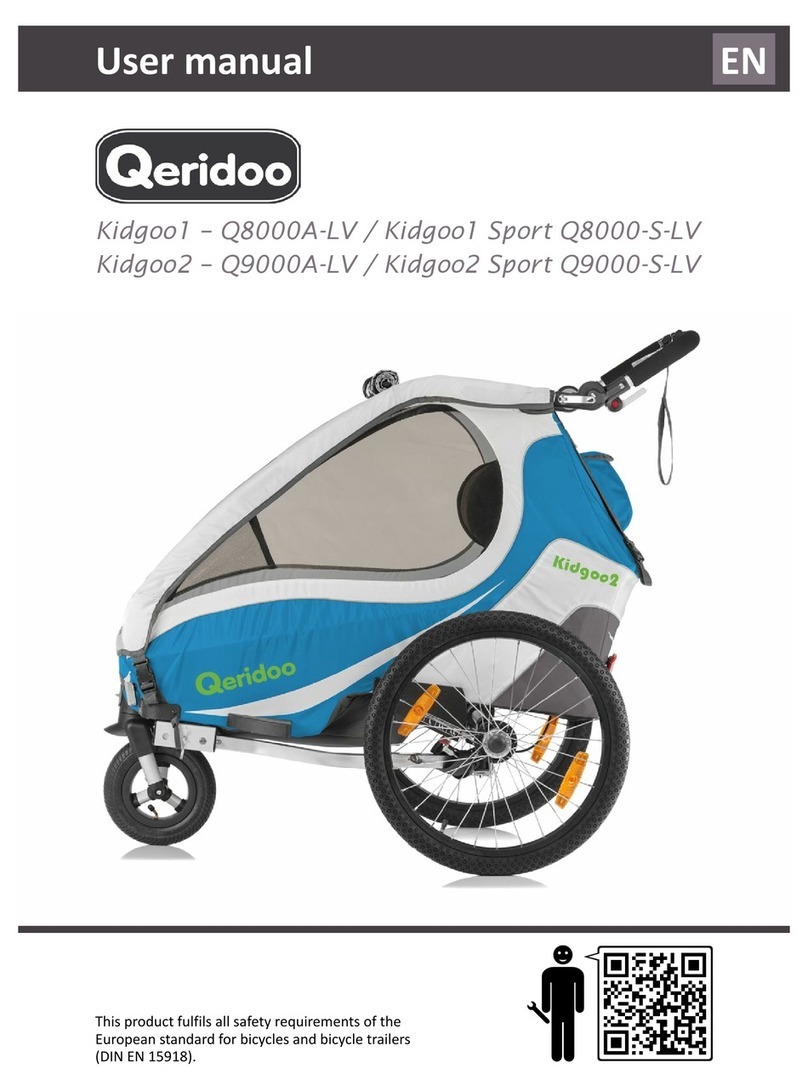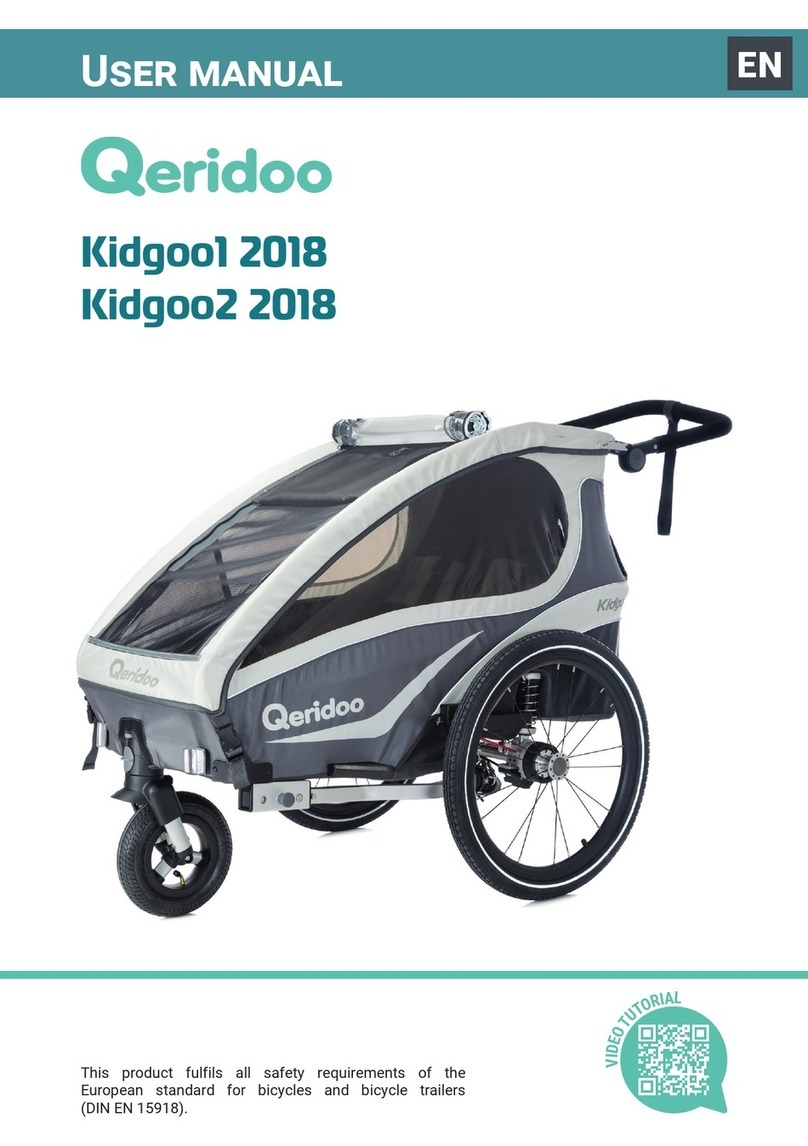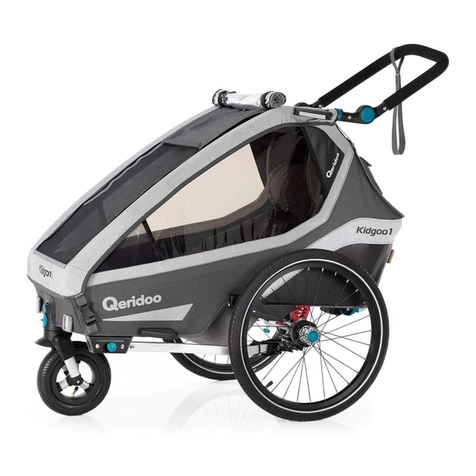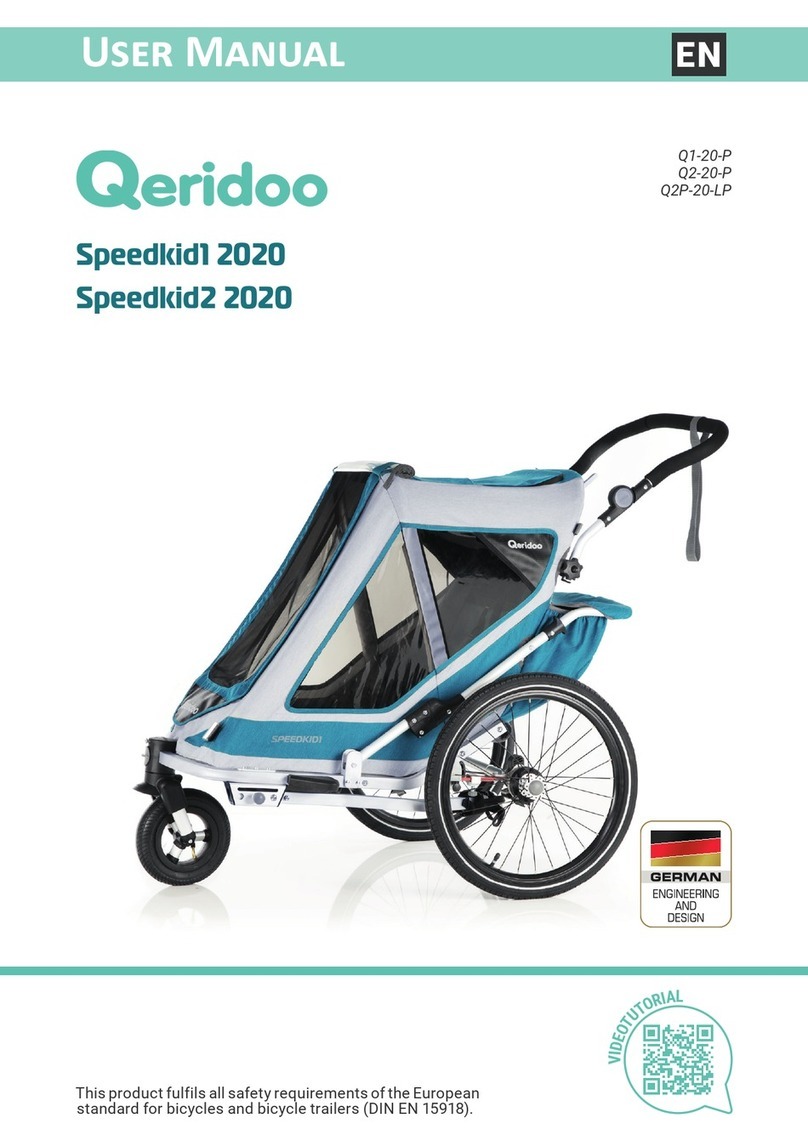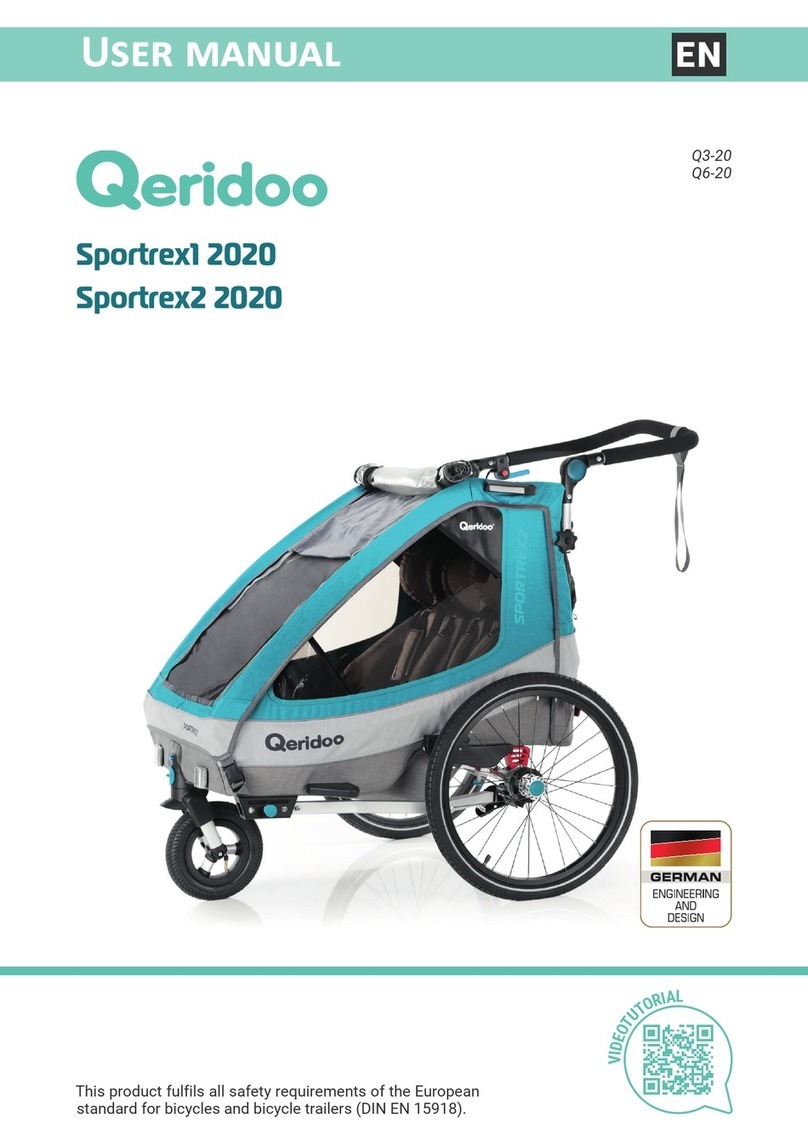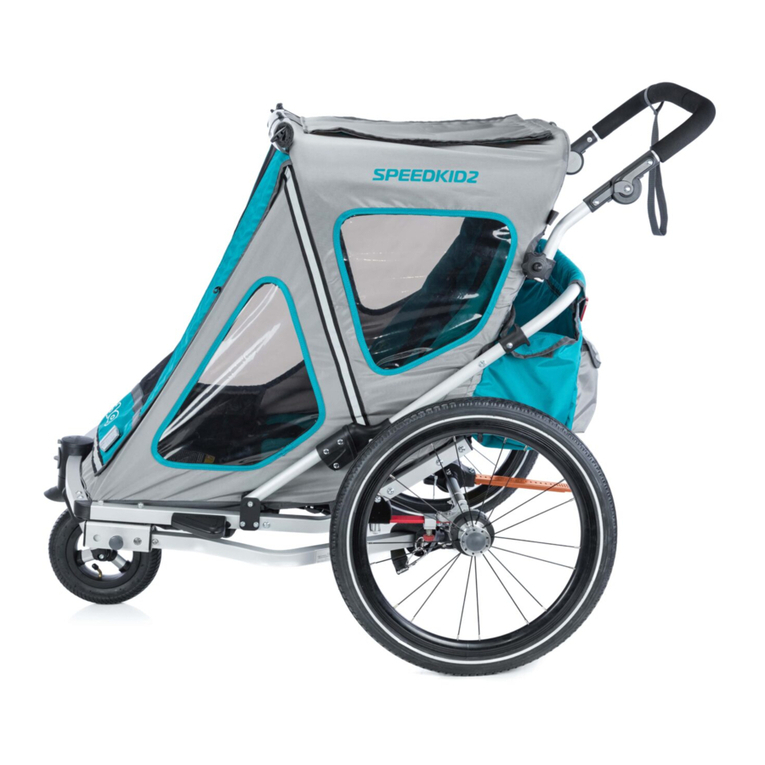
Kidgoo 2019 Subject to change. – 06|2019 – 7
Each child must be properly fastened in with a 5-point safety harness.
The children must wear bicycle helmets for every journey. This is also
recommended for the bicycle rider in Trailer mode in order to set a good
example.
Before each journey, explain to the children that they must behave appropriately.
Undoing safety harnesses, excessive rocking or leaning out must be strictly
forbidden.
Make sure that the cabin is well ventilated and make sure that the children are
wearing clothes appropriate for the weather conditions and the cabin’s inside temperature.
Never leave children unsupervised in the Kidgoo and make sure that they feel comfortable.
Make regular stops during longer journeys to give the children the opportunity to get out and move
around. Make sure that they drink sufficient liquids.
As the towing vehicle, it is not permitted to use vehicles that must be registered such as motorised
e-bikes for speeds up to 45 km/h or vehicles with a combustion engine.
Please note that bicycle trailers towed by electrically power assisted cycles (EPAC) may be
restricted by law.
The bicycle or the pedelec (motorised for speeds up to 25 km/h) must be technically sound
and suitable for towing loads in accordance with the permissible total weight. The maximum
permissible total weight can be found in chapter „Performance limits“ on page4. For details,
read the towing vehicle’s manual or consult a specialist dealer for a suitable inspection to be
carried out.
Before every journey, test the function of the bicycle’s brakes, brake linings and tyres and inspect
them for wear. Check that the coupler is secure.
For carrying passengers, the bicycle should be equipped with a rear-view mirror. Working lights
conforming to the road traffic regulations are mandatory for journeys in darkness or conditions of
poor visibility.
Follow all instructions relating to the care and maintenance of the Kidgoo and observe the
specified maintenance intervals, see „Care and maintenance“ on page32.
Install and use only original accessories and spare parts manufactured or recommended by
Qeridoo. Using other products relieves the manufacturer of liability.
Only carry out structural modifications or extensions to the vehicle which are necessary
for the use of the approved accessories in accordance with the assembly instructions. Any
further manipulation that is not expressly approved by the manufacturer in writing relieves the
manufacturer of liability in the event of accidents and defects.
Follow the instructions in the chapter „Storage“ on page31 for storing the Kidgoo properly when
it is not in use.
The way in which the bicycle moves changes significantly when it is pulling a trailer, and this is particu-
larly noticeable when braking and cornering. With regard to this, pay attention to the following:
Practice cycling with the trailer before going out onto the road.
Do not carry children until you have familiarised yourself with the different riding behaviour on
suitable terrain.
Think of the children’s safety whenever you ride. Always adapt your way of riding and your speed to
local conditions, and never forget that you are towing a trailer.
A
C
C
E
S
S
O
R
I
E
S


